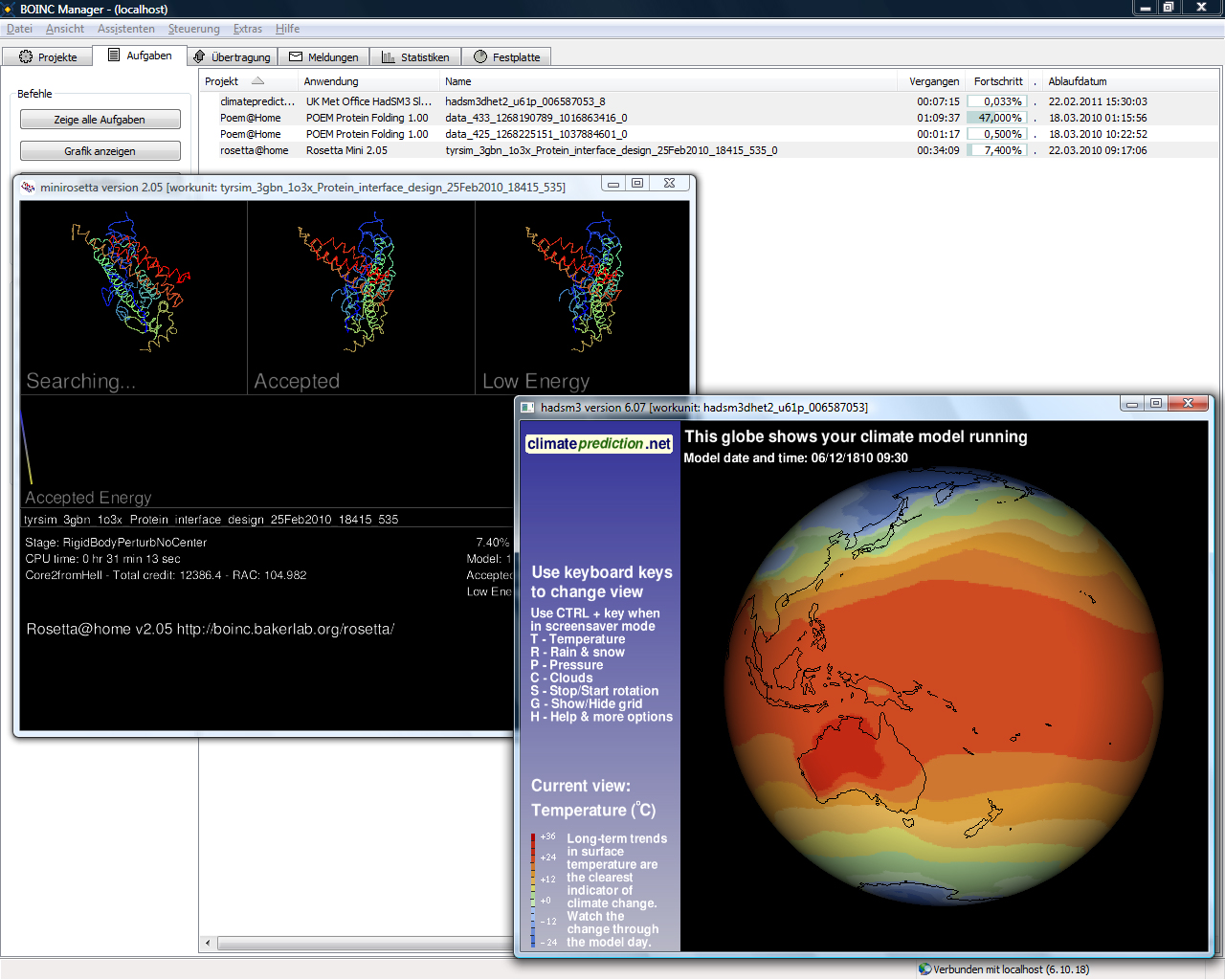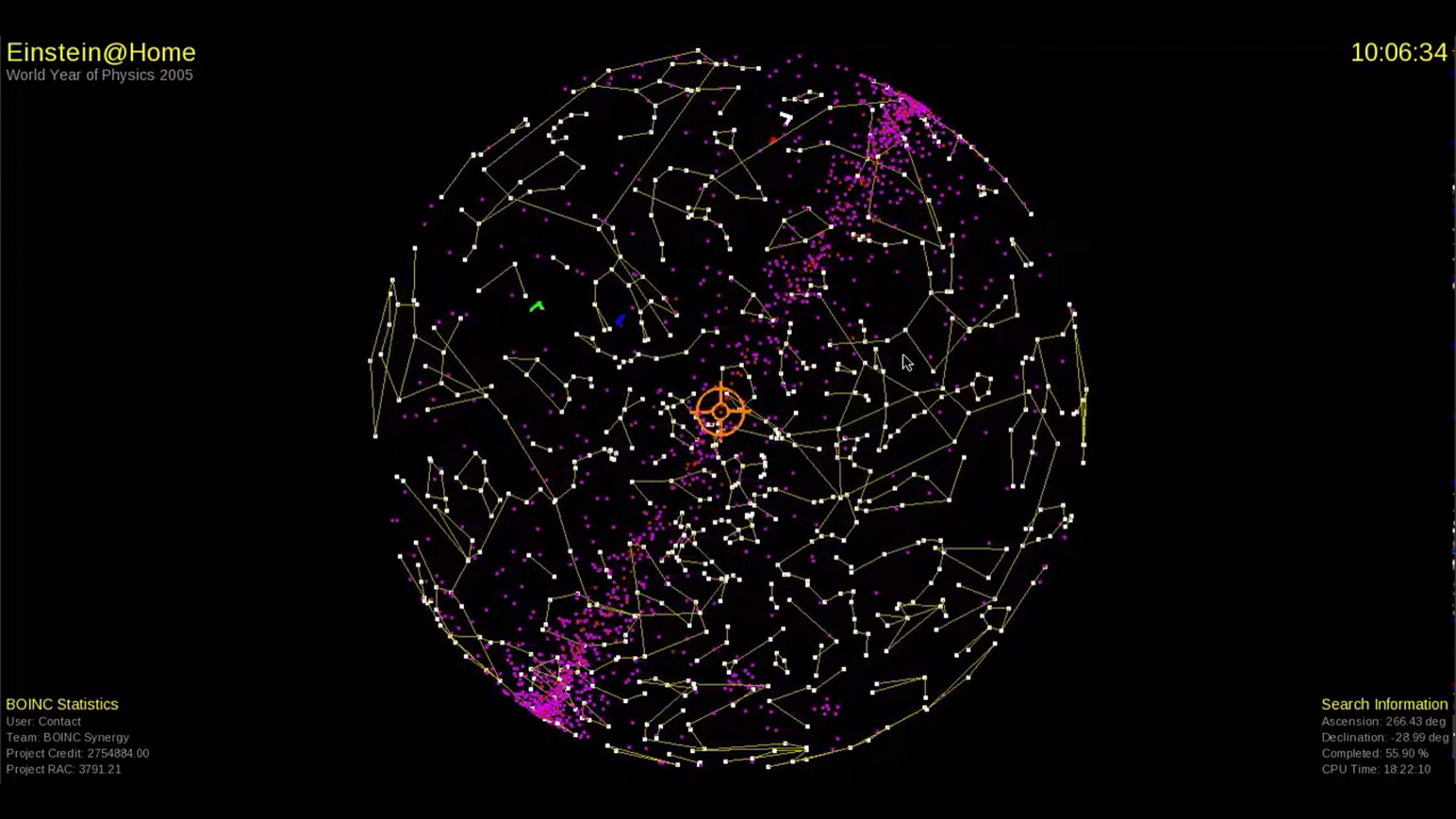|
Systemic (amateur Extrasolar Planet Search Project)
Systemic is a research project designed to search data for extrasolar planets using amateur astronomers. The project utilizes a downloaded console provided on the Systemic website, allowing users to sort through data sets in search of characteristics which may reveal the presence of a planet within a planetary system. Volunteers can choose to search simulated or actual planetary systems. The simulations are used to help Systemic gain a deeper understanding of real extrasolar planets. The real Solar System and the Galilean moons of Jupiter's natural satellites (hidden among the "challenge" data sets) are among the more than 450 data sets of real, and 520 simulated, star systems. The systemic program itself is programmed in Java for ease in running on multiple operating systems. The program is available as an online applet or for download to be run at home. The program presents a data set for a system and some tools to help analyze the data and some feedback on the "goodness of fit ... [...More Info...] [...Related Items...] OR: [Wikipedia] [Google] [Baidu] |
Extrasolar Planet
An exoplanet or extrasolar planet is a planet outside the Solar System. The first possible evidence of an exoplanet was noted in 1917 but was not recognized as such. The first confirmation of detection occurred in 1992. A different planet, initially detected in 1988, was confirmed in 2003. There are many methods of detecting exoplanets. Transit (astronomy), Transit photometry and Doppler spectroscopy have found the most, but these methods suffer from a clear observational bias favoring the detection of planets near the star; thus, 85% of the exoplanets detected are inside the tidal locking zone. In several cases, List of multiplanetary systems, multiple planets have been observed around a star. About 1 in 5 Solar analog, Sun-like starsFor the purpose of this 1 in 5 statistic, "Sun-like" means G-type star. Data for Sun-like stars was not available so this statistic is an extrapolation from data about K-type star, K-type stars. have an "Earth-sized"For the purpose of this 1 in 5 ... [...More Info...] [...Related Items...] OR: [Wikipedia] [Google] [Baidu] |
Caltech
The California Institute of Technology (branded as Caltech or CIT)The university itself only spells its short form as "Caltech"; the institution considers other spellings such a"Cal Tech" and "CalTech" incorrect. The institute is also occasionally referred to as "CIT", most notably in its alma mater, but this is uncommon. is a private university, private research university in Pasadena, California. Caltech is ranked among the best and most selective academic institutions in the world, and with an enrollment of approximately 2400 students (acceptance rate of only 5.7%), it is one of the world's most selective universities. The university is known for its strength in science and engineering, and is among a small group of Institute of Technology (United States), institutes of technology in the United States which is primarily devoted to the instruction of pure and applied sciences. The institution was founded as a preparatory and vocational school by Amos G. Throop in 1891 and began ... [...More Info...] [...Related Items...] OR: [Wikipedia] [Google] [Baidu] |
Amateur Astronomy Organizations
An amateur () is generally considered a person who pursues an avocation independent from their source of income. Amateurs and their pursuits are also described as popular, informal, self-taught, user-generated, DIY, and hobbyist. History Historically, the amateur was considered to be the ideal balance between pure intent, open mind, and the interest or passion for a subject. That ideology spanned many different fields of interest. It may have its roots in the ancient Greek philosophy of amateur athletes competing in the Olympics. The ancient Greek citizens spent most of their time in other pursuits, but competed according to their natural talents and abilities. The "gentleman amateur" was a phenomenon among the gentry of Great Britain from the 17th century until the 20th century. With the start of the Age of Reason, with people thinking more about how the world works around them, (see science in the Age of Enlightenment), things like the cabinets of curiosities, and the w ... [...More Info...] [...Related Items...] OR: [Wikipedia] [Google] [Baidu] |
Amateur Astronomy
Amateur astronomy is a hobby where participants enjoy observing or imaging celestial objects in the sky using the unaided eye, binoculars, or telescopes. Even though scientific research may not be their primary goal, some amateur astronomers make contributions in doing citizen science, such as by monitoring variable stars, double stars, sunspots, or occultations of stars by the Moon or asteroids, or by discovering transient astronomical events, such as comets, galactic novae or supernovae in other galaxies. Amateur astronomers do not use the field of astronomy as their primary source of income or support, and usually have no professional degree in astrophysics or advanced academic training in the subject. Most amateurs are hobbyists, while others have a high degree of experience in astronomy and may often assist and work alongside professional astronomers. Many astronomers have studied the sky throughout history in an amateur framework; however, since the beginning of the ... [...More Info...] [...Related Items...] OR: [Wikipedia] [Google] [Baidu] |
Associated Press
The Associated Press (AP) is an American non-profit news agency headquartered in New York City. Founded in 1846, it operates as a cooperative, unincorporated association. It produces news reports that are distributed to its members, U.S. newspapers and broadcasters. The AP has earned 56 Pulitzer Prizes, including 34 for photography, since the award was established in 1917. It is also known for publishing the widely used '' AP Stylebook''. By 2016, news collected by the AP was published and republished by more than 1,300 newspapers and broadcasters, English, Spanish, and Arabic. The AP operates 248 news bureaus in 99 countries. It also operates the AP Radio Network, which provides newscasts twice hourly for broadcast and satellite radio and television stations. Many newspapers and broadcasters outside the United States are AP subscribers, paying a fee to use AP material without being contributing members of the cooperative. As part of their cooperative agreement with the AP, most ... [...More Info...] [...Related Items...] OR: [Wikipedia] [Google] [Baidu] |
SETI
The search for extraterrestrial intelligence (SETI) is a collective term for scientific searches for intelligent extraterrestrial life, for example, monitoring electromagnetic radiation for signs of transmissions from civilizations on other planets. Scientific investigation began shortly after the advent of radio in the early 1900s, and focused international efforts have been ongoing since the 1980s. In 2015, Stephen Hawking and Israeli billionaire Yuri Milner announced a project called Breakthrough Listen. History Early work There have been many earlier searches for extraterrestrial intelligence within the Solar System. In 1896, Nikola Tesla suggested that an extreme version of his wireless electrical transmission system could be used to contact beings on Mars. In 1899, while conducting experiments at his Colorado Springs experimental station, he thought he had detected a signal from Mars since an odd repetitive static signal seemed to cut off when Mars set in the night ... [...More Info...] [...Related Items...] OR: [Wikipedia] [Google] [Baidu] |
Methods Of Detecting Extrasolar Planets
Any planet is an extremely faint light source compared to its parent star. For example, a star like the Sun is about a billion times as bright as the reflected light from any of the planets orbiting it. In addition to the intrinsic difficulty of detecting such a faint light source, the light from the parent star causes a glare that washes it out. For those reasons, very few of the exoplanets reported have been observed directly, with even fewer being resolved from their host star. Instead, astronomers have generally had to resort to indirect methods to detect extrasolar planets. As of 2016, several different indirect methods have yielded success. Established detection methods The following methods have at least once proved successful for discovering a new planet or detecting an already discovered planet: Radial velocity A star with a planet will move in its own small orbit in response to the planet's gravity. This leads to variations in the speed with which the star move ... [...More Info...] [...Related Items...] OR: [Wikipedia] [Google] [Baidu] |
List Of Volunteer Computing Projects
This is a comprehensive list of volunteer computing projects; a type of distributed computing where volunteers donate computing time to specific causes. The donated computing power comes from idle CPUs and GPUs in personal computers, video game consoles and Android devices. Each project seeks to utilize the computing power of many internet connected devices to solve problems and perform tedious, repetitive research in a very cost effective manner. Active projects Completed projects See also * List of grid computing projects * List of citizen science projects * List of crowdsourcing projects * List of free and open-source Android applications This is a list of notable applications (''apps'') that run on the Android platform which meet guidelines for free software and open-source software. Advertisement blocking Web browsers Office Suites and synchronisation Co ... * List of Berkeley Open Infrastructure for Network Computing (BOINC) projects ... [...More Info...] [...Related Items...] OR: [Wikipedia] [Google] [Baidu] |
Ken Croswell
Ken Croswell is an American astronomer and author. His first degree, from Washington University in St. Louis, mixed science and wider interests, majoring in physics and minoring in English literature. He also got a PhD in astronomy from Harvard University for studying the Milky Way's halo. He is primarily known as a writer on astronomy and space topics. He has written regularly the ''New Scientist'', ''New York Times'' and various magazines in the popular science press. He is also the author of six books on astronomy, including ''The Alchemy of the Heavens'' and ''Planet Quest,'' and often reports on the radio program the John Batchelor Show. Croswell lives in Berkeley, California Berkeley ( ) is a city on the eastern shore of San Francisco Bay in northern Alameda County, California, United States. It is named after the 18th-century Irish bishop and philosopher George Berkeley. It borders the cities of Oakland and Emer .... Bibliography Books * * Essays and report ... [...More Info...] [...Related Items...] OR: [Wikipedia] [Google] [Baidu] |
Grid Computing
Grid computing is the use of widely distributed computer resources to reach a common goal. A computing grid can be thought of as a distributed system with non-interactive workloads that involve many files. Grid computing is distinguished from conventional high-performance computing systems such as cluster computing in that grid computers have each node set to perform a different task/application. Grid computers also tend to be more heterogeneous and geographically dispersed (thus not physically coupled) than cluster computers. Although a single grid can be dedicated to a particular application, commonly a grid is used for a variety of purposes. Grids are often constructed with general-purpose grid middleware software libraries. Grid sizes can be quite large. Grids are a form of distributed computing composed of many networked loosely coupled computers acting together to perform large tasks. For certain applications, distributed or grid computing can be seen as a special type of ... [...More Info...] [...Related Items...] OR: [Wikipedia] [Google] [Baidu] |
Einstein@Home
Einstein@Home is a volunteer computing project that searches for signals from spinning neutron stars in data from gravitational-wave detectors, from large radio telescopes, and from a gamma-ray telescope. Neutron stars are detected by their pulsed radio and gamma-ray emission as radio and/or gamma-ray pulsars. They also might be observable as continuous gravitational wave sources if they are rapidly spinning and non-axisymmetrically deformed. The project was officially launched on 19 February 2005 as part of the American Physical Society's contribution to the World Year of Physics 2005 event. Einstein@Home searches data from the LIGO gravitational-wave detectors. The project conducts the most sensitive all-sky searches for continuous gravitational waves. While no such signal has yet been detected, the upper limits set by Einstein@Home analyses provide astrophysical constraints on the Galactic population of spinning neutron stars. Einstein@Home also searches radio telescope data f ... [...More Info...] [...Related Items...] OR: [Wikipedia] [Google] [Baidu] |
BOINC
The Berkeley Open Infrastructure for Network Computing (BOINC, pronounced – rhymes with "oink") is an open-source middleware system for volunteer computing (a type of distributed computing). Developed originally to support SETI@home, it became the platform for many other applications in areas as diverse as medicine, molecular biology, mathematics, linguistics, climatology, environmental science, and astrophysics, among others. The purpose of BOINC is to enable researchers to utilize processing resources of personal computers and other devices around the world. BOINC development began with a group based at the Space Sciences Laboratory (SSL) at the University of California, Berkeley, and led by David P. Anderson, who also led SETI@home. As a high-performance volunteer computing platform, BOINC brings together 34,236 active participants employing 136,341 active computers (hosts) worldwide, processing daily on average 20.164 PetaFLOPS (it would be the 21st largest processin ... [...More Info...] [...Related Items...] OR: [Wikipedia] [Google] [Baidu] |

.jpg)





